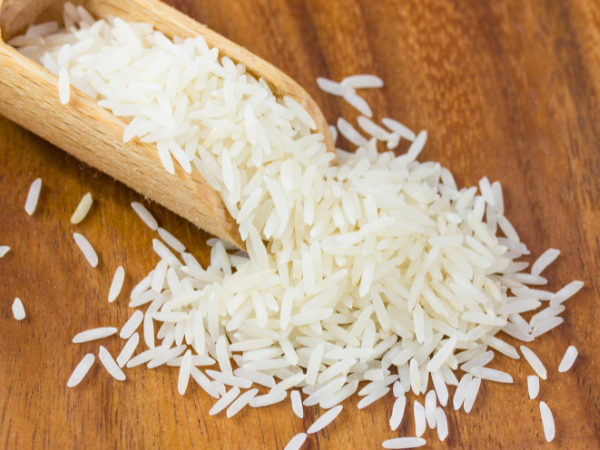Yes, cooked rice is a Temperature Control for Safety (TCS) food. It requires proper temperature management to prevent bacterial growth.
Cooked rice can become a breeding ground for bacteria if not handled correctly. Keeping it at safe temperatures is crucial to avoid foodborne illnesses. Like other TCS foods, cooked rice must be stored at temperatures either below 41°F (5°C) or above 135°F (57°C).
This ensures harmful bacteria do not thrive. Proper storage and handling are essential, especially in commercial kitchens and food service settings.
Understanding Temperature Control For Safety (tcs) Foods
Understanding Temperature Control for Safety (TCS) foods helps in keeping your meals safe and healthy. Let’s delve into what TCS foods are and why temperature control is crucial for food safety.
What Are Tcs Foods?
TCS foods are those that need certain temperatures to prevent the growth of harmful bacteria. These foods can spoil quickly if not handled properly. They require refrigeration, cooking, or holding at specific temperatures. Here are some common TCS foods:
- Dairy products like milk and cheese
- Meat and poultry
- Seafood
- Cooked vegetables
- Cooked rice and pasta
Cooked rice falls under TCS foods because it provides a perfect environment for bacteria to grow. This happens if it’s left at room temperature for too long. To keep TCS foods safe, follow these guidelines:
| Food | Safe Temperature |
|---|---|
| Cooked Rice | Below 40°F or above 140°F |
| Meat | Below 40°F or above 140°F |
| Dairy | Below 40°F |
Knowing these temperatures is vital. It helps prevent foodborne illnesses. Always store and cook TCS foods at the right temperatures.
Why Is Temperature Control Important For Food Safety?
Temperature control is essential to keep food safe. Bacteria grow rapidly between 40°F and 140°F, known as the “Danger Zone.” Keeping food out of this range limits bacterial growth.
Here are some reasons why temperature control is important:
- Prevents foodborne illnesses
- Keeps food fresh and tasty
- Reduces food waste
Food safety experts recommend these tips:
- Refrigerate perishable foods within 2 hours
- Heat leftovers to at least 165°F
- Use a food thermometer to check temperatures
By following these tips, you can ensure your food remains safe. Always be mindful of the temperatures at which you store and cook your food. This keeps you and your family safe from harmful bacteria.

Cooked Rice As A Tcs Food
Cooked rice is a staple in many diets across the globe. But did you know that it is considered a Temperature Control for Safety (TCS) food? This classification means that cooked rice must be handled with care to prevent foodborne illnesses.
Why Cooked Rice Is Classified As A Tcs Food
Cooked rice falls under the TCS category due to its susceptibility to rapid bacterial growth. Here are some key reasons:
- Moisture Content: Cooked rice has high moisture, creating a perfect environment for bacteria.
- Nutrient-rich: Rice provides ample nutrients that bacteria need to grow.
- Neutral pH: The neutral pH of cooked rice supports bacterial growth.
Because of these factors, cooked rice must be kept at safe temperatures. According to food safety guidelines, the danger zone for bacterial growth is between 40°F and 140°F (4°C to 60°C). To ensure safety:
| Action | Temperature | Time |
|---|---|---|
| Keep hot | Above 140°F (60°C) | Up to 4 hours |
| Keep cold | Below 40°F (4°C) | Up to 7 days |
| Reheat | 165°F (74°C) | Within 2 hours |
Risks Associated With Improperly Handled Cooked Rice
Improper handling of cooked rice can lead to serious health risks. The main culprits are bacteria like Bacillus cereus and Staphylococcus aureus. These bacteria can cause food poisoning. Here are some risks:
- Bacillus cereus: This bacteria can produce toxins that cause vomiting and diarrhea. It can survive cooking temperatures and thrive in improperly stored rice.
- Staphylococcus aureus: This bacteria can contaminate rice through improper handling. It produces toxins that are heat-resistant and can cause severe food poisoning.
To avoid these risks, follow these guidelines:
- Store rice properly: Refrigerate cooked rice within two hours of cooking.
- Reheat thoroughly: Ensure rice reaches an internal temperature of 165°F (74°C) when reheating.
- Avoid cross-contamination: Use clean utensils and surfaces when handling cooked rice.
By following these practices, you can enjoy cooked rice safely, without the worry of foodborne illnesses.
Proper Handling And Storage Of Cooked Rice
This section will cover safe cooking temperatures, best practices for cooling, and safe reheating methods.
Safe Cooking Temperatures For Rice
Cooking rice to the right temperature is vital for eliminating harmful bacteria. Ensure the rice reaches at least 165°F (74°C) during cooking. Here’s how to achieve this safely:
- Use a food thermometer: Check the internal temperature of the rice.
- Boil the rice: Make sure the water is boiling before adding the rice. Keep it at a rolling boil for the entire cooking time.
- Follow package instructions: Different types of rice may have specific cooking times and temperatures.
A table can help you quickly reference the cooking temperatures for different types of rice:
| Type of Rice | Cooking Temperature |
|---|---|
| White Rice | 165°F (74°C) |
| Brown Rice | 165°F (74°C) |
| Basmati Rice | 165°F (74°C) |
| Jasmine Rice | 165°F (74°C) |
Best Practices For Cooling Cooked Rice
Proper cooling of cooked rice is essential to prevent bacterial growth. Follow these best practices:
- Cool quickly: Transfer cooked rice to shallow containers to cool faster.
- Use an ice bath: Place the container in an ice bath to speed up the cooling process.
- Refrigerate promptly: Place the cooled rice in the refrigerator within two hours.
Here is a step-by-step process for cooling cooked rice:
- Transfer rice to a shallow container immediately after cooking.
- Place the container in an ice bath to lower the temperature quickly.
- Stir the rice occasionally to help release heat.
- Once the rice is cool, cover and store it in the refrigerator.
- Ensure the refrigerator is set to 40°F (4°C) or lower.
Safe Reheating Methods For Cooked Rice
Reheating rice properly is just as important as cooking and cooling it. Follow these safe reheating methods:
- Microwave: Add a splash of water to the rice and cover it. Reheat until the rice reaches 165°F (74°C).
- Stovetop: Place the rice in a saucepan with a little water. Heat on medium, stirring occasionally until it reaches 165°F (74°C).
- Oven: Place rice in an oven-safe dish, cover with foil, and bake at 350°F (175°C) until it reaches 165°F (74°C).
Here’s a quick reference table for reheating methods:
| Method | Instructions |
|---|---|
| Microwave | Add water, cover, reheat to 165°F (74°C) |
| Stovetop | Heat with water, stir, reheat to 165°F (74°C) |
| Oven | Bake at 350°F (175°C) covered, reheat to 165°F (74°C) |
Preventing Foodborne Illness With Tcs Foods
TCS foods require proper handling to prevent foodborne illnesses. Understanding how to handle these foods ensures you keep your meals safe and healthy. Preventing foodborne illness with TCS foods is essential for everyone, especially in busy kitchens.
Common Bacteria Found In Improperly Stored Rice
Improperly stored rice can harbor harmful bacteria. These bacteria thrive in warm, moist environments. Common bacteria found in improperly stored rice include:
- Bacillus cereus: This bacteria can cause severe vomiting and diarrhea. It grows quickly at room temperature.
- Clostridium perfringens: Often found in cooked foods left out for too long. Symptoms include abdominal cramps and diarrhea.
- Staphylococcus aureus: This bacteria can produce toxins that cause food poisoning. Symptoms include nausea, vomiting, and stomach cramps.
To avoid these bacteria, always store cooked rice properly. Keep it hot (above 140°F) or refrigerate it (below 40°F) within two hours of cooking. Use shallow containers for quick cooling and never leave rice out at room temperature for too long. Proper storage prevents bacteria from multiplying and keeps your rice safe to eat.
Tips For Ensuring Food Safety In The Kitchen
Ensuring food safety in the kitchen requires attention to detail. Here are some tips to keep your food safe:
- Wash your hands: Always wash your hands with soap and water before handling food.
- Use clean utensils: Ensure all cooking utensils and surfaces are clean before use.
- Cook to safe temperatures: Use a food thermometer to check that food reaches the proper internal temperature.
- Store food properly: Refrigerate perishable items promptly. Keep your refrigerator at or below 40°F.
- Avoid cross-contamination: Use separate cutting boards for raw meat and vegetables.
Follow these tips to reduce the risk of foodborne illnesses. Proper food handling ensures your meals are safe and delicious. Remember, a clean kitchen is a safe kitchen.
Conclusion
Cooked rice is indeed a Temperature Control for Safety (TCS) food. Proper handling and storage are crucial. Ensuring rice stays out of the danger zone prevents bacterial growth. By keeping cooked rice safe, you protect your health and enjoy meals without worry.
Always prioritize food safety in your kitchen.



